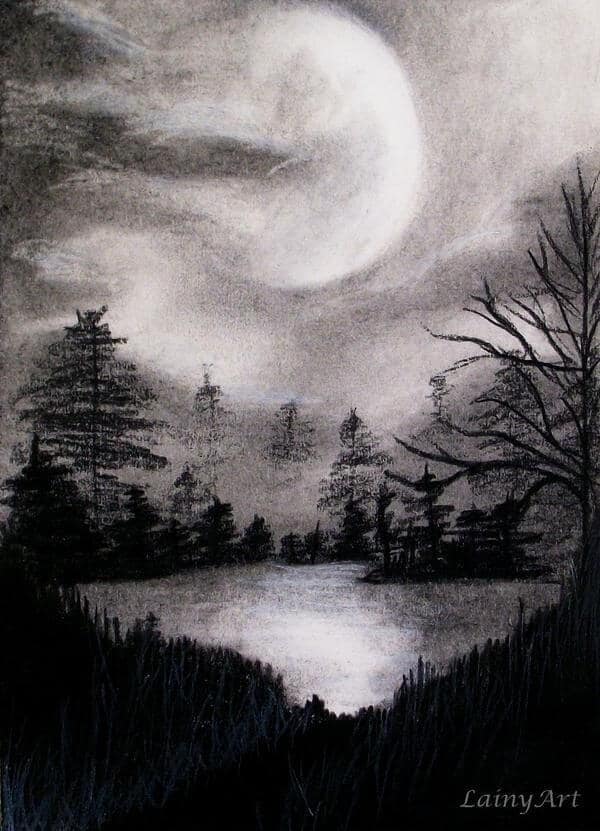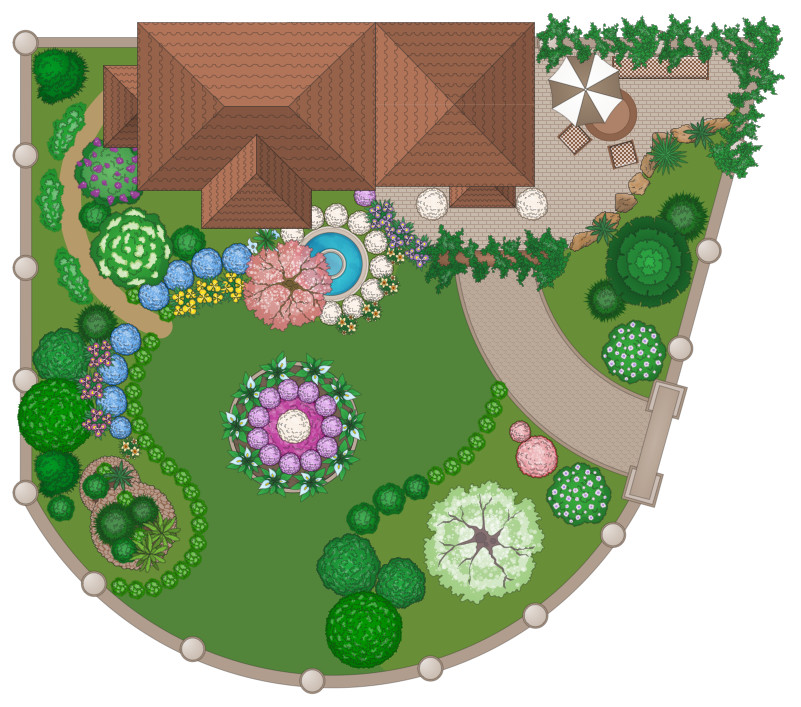landscape design drawings sketches ideas
Landscape Design Drawings, Sketches, and Ideas

Landscape design is the art of arranging natural and man-made elements to create a beautiful and functional outdoor space. It can be used to improve the appearance of a property, create a more inviting outdoor living space, or enhance the value of a home.
Landscape design drawings and sketches are essential tools for any landscape designer. They allow the designer to visualize their ideas and communicate them to clients. Landscape drawings can also be used to create a budget for the project and to obtain permits from the local government.
There are a few different types of landscape drawings that a designer may create. These include:

- Site plans: These drawings show the overall layout of the property, including the location of buildings, driveways, walkways, and other features.
- Planting plans: These drawings show the specific types and locations of plants that will be used in the landscape design.
- Construction plans: These drawings show the details of how the landscape will be built, including the dimensions of the beds, the type of irrigation system, and the location of the lighting fixtures.

In addition to these basic types of drawings, landscape designers may also create more specialized drawings, such as:
- Perspective drawings: These drawings show a realistic view of the landscape design from a specific vantage point.
- Renderings: These drawings use computer software to create a realistic, three-dimensional representation of the landscape design.
- Videos: These videos can be used to give clients a more immersive experience of the landscape design.


Landscape design drawings and sketches are an important part of the process of creating a beautiful and functional outdoor space. They allow the designer to visualize their ideas, communicate them to clients, and create a plan for the project.

Landscape Design Ideas
When it comes to landscape design, there are endless possibilities. The best landscape design ideas will be unique to your property and your needs. However, there are some general principles that can help you create a beautiful and functional outdoor space.


- Start with a good plan. The first step to any landscape design project is to create a plan. This will help you to visualize the finished product and to make sure that all of the elements of your design work together.
- Choose the right plants for your climate. The plants that you choose for your landscape design will depend on your climate. Make sure to choose plants that are hardy in your area and that will thrive in the conditions that you have.
- Create a focal point. Every landscape design needs a focal point. This can be a tree, a sculpture, or a water feature. The focal point will draw the eye and create a sense of interest in your landscape.
- Use hardscape elements to define space. Hardscape elements, such as patios, walkways, and retaining walls, can be used to define space in your landscape. They can also be used to create pathways and to lead the eye around your property.
- Add water features for interest and beauty. Water features can add interest and beauty to any landscape design. They can also help to create a more relaxing and inviting outdoor space.
- Include plenty of seating. A well-designed landscape should include plenty of seating so that you can enjoy your outdoor space. Seating can be built-in or freestanding, and it can be placed in a variety of locations around your property.

By following these general principles, you can create a beautiful and functional outdoor space that you will enjoy for years to come.
Here are some specific landscape design ideas that you can try:

- Create a shady spot for summertime entertaining. A pergola or arbor can provide shade and shelter from the sun, making it the perfect spot for outdoor parties and gatherings.
- Add a water feature to create a relaxing oasis. A fountain, pond, or waterfall can help to create a more peaceful and relaxing atmosphere in your landscape.
- Incorporate native plants into your landscape design. Native plants are well-suited to your local climate and conditions, and they will require less maintenance than non-native plants.
- Use hardscape elements to create a variety of textures and interest. Combining different types of hardscape materials, such as stone, brick, and wood, can create a more visually appealing landscape.
- Add lighting to your landscape to extend the use of your outdoor space. Outdoor lighting can be used to create a warm and inviting atmosphere, and it can also be used to highlight specific features of your landscape.

With a little creativity and planning, you can create a beautiful and functional outdoor space that you will enjoy for years to come.
Conclusion


Landscape design is an art form that can be used to create
Landscape Design Drawings, Sketches, and Ideas


Landscape design is the art of arranging outdoor spaces to create a visually pleasing and functional environment. It can be done on any scale, from a small backyard to a large park or estate. Landscape design drawings and sketches are essential tools for any landscape architect or designer. They can help to visualize a project, communicate ideas to clients, and get approval from building authorities.

There are many different types of landscape design drawings and sketches. Some of the most common include:
- Site plans: These drawings show the overall layout of a landscape project, including the location of buildings, walkways, plants, and other features.
- Elevations: These drawings show the height of different features in a landscape project, such as walls, fences, and plants.
- Sections: These drawings show a cross-section of a landscape project, revealing the relationship between different layers of the design, such as the ground, plants, and water features.
- Perspective drawings: These drawings create a realistic view of a landscape project, as if the viewer were standing in the space.
- Sketches: These drawings are freehand drawings that capture the essence of a landscape design concept. They are often used to explore ideas and communicate with clients.


When creating landscape design drawings and sketches, it is important to use accurate measurements and to be consistent with scale. It is also important to use clear and concise linework. The goal is to create drawings that are easy to understand and that accurately communicate the designer's vision.

In addition to technical skills, landscape designers also need to have a strong understanding of the principles of design, such as balance, proportion, and rhythm. They need to be able to create designs that are both visually appealing and functional.
Landscape design is a creative and rewarding field. It offers the opportunity to work on a variety of projects and to make a positive impact on the built environment. If you are interested in pursuing a career in landscape design, there are many resources available to help you learn the skills you need.


Tips for Creating Landscape Design Drawings and Sketches
Here are a few tips for creating landscape design drawings and sketches:
- Start with a concept: Before you start drawing, take some time to think about the overall concept for your design. What do you want the space to be used for? What kind of mood do you want to create? Once you have a clear idea of your concept, you can start to develop your drawing.
- Use simple shapes: When drawing, use simple shapes to create a strong foundation for your design. Avoid using too many details, as this can make your drawing look cluttered and difficult to understand.
- Focus on proportion: When arranging your elements, pay attention to proportion. The size and shape of each element should be in proportion to the other elements in the design.
- Use line, tone, and texture: Use line, tone, and texture to create visual interest in your drawing. Lines can be used to create structure and movement, tones can be used to create depth and shadow, and textures can be used to add interest and detail.
- Keep your drawing neat and organized: Your drawing should be neat and organized, so that it is easy to read and understand. Avoid making unnecessary marks or corrections, as this can make your drawing look messy.


Resources for Learning Landscape Design

There are many resources available to help you learn landscape design. Here are a few of the best:
- The American Society of Landscape Architects (ASLA): ASLA is the leading professional organization for landscape architects in the United States. The organization offers a variety of resources for learning landscape design, including online courses, webinars, and publications.
- The International Society of Landscape Architects (ISALA): ISALA is an international organization for landscape architects. The organization offers a variety of resources for learning landscape design, including online courses, webinars, and publications.
- The Association of Professional Landscape Designers (APLD): APLD is a professional organization for landscape designers in Canada. The organization offers a variety of resources for learning landscape design, including online courses, webinars, and publications.
- Landscaping Magazine: Landscaping Magazine is a monthly magazine that provides news, articles, and advice on landscape design. The magazine is a great resource for staying up-to-date on the latest trends in landscape design.
- Landscape Architecture Magazine: Landscape Architecture Magazine is a bimonthly magazine that publishes articles on landscape design, planning, and construction. The magazine is a great resource for learning about the latest trends in landscape design.


With so many resources available, there is no excuse not to learn landscape design. By following these tips and using the resources available, you can develop.


